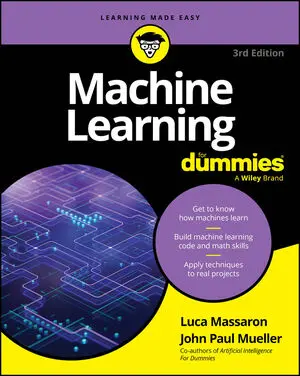- Supervised learning
- Unsupervised learning
- Reinforcement learning
Supervised learning
Supervised learning occurs when an algorithm learns from example data and associated target responses that can consist of numeric values or string labels, such as classes or tags, in order to later predict the correct response when posed with new examples. The supervised approach is indeed similar to human learning under the supervision of a teacher. The teacher provides good examples for the student to memorize, and the student then derives general rules from these specific examples.You need to distinguish between regression problems, whose target is a numeric value, and classification problems, whose target is a qualitative variable, such as a class or a tag. A regression task determines the average prices of houses in the Boston area, and a classification tasks distinguishes between kinds of iris flowers based on their sepal and petal measures.
Unsupervised learning
Unsupervised learning occurs when an algorithm learns from plain examples without any associated response, leaving to the algorithm to determine the data patterns on its own. This type of algorithm tends to restructure the data into something else, such as new features that may represent a class or a new series of uncorrelated values. They are quite useful in providing humans with insights into the meaning of data and new useful inputs to supervised machine learning algorithms.As a kind of learning, it resembles the methods humans use to figure out that certain objects or events are from the same class, such as by observing the degree of similarity between objects. Some recommendation systems that you find on the web in the form of marketing automation are based on this type of learning.
The marketing automation algorithm derives its suggestions from what you’ve bought in the past. The recommendations are based on an estimation of what group of customers you resemble the most and then inferring your likely preferences based on that group.
Reinforcement learning
Reinforcement learning occurs when you present the algorithm with examples that lack labels, as in unsupervised learning. However, you can accompany an example with positive or negative feedback according to the solution the algorithm proposes. Reinforcement learning is connected to applications for which the algorithm must make decisions (so the product is prescriptive, not just descriptive, as in unsupervised learning), and the decisions bear consequences. In the human world, it is just like learning by trial and error.Errors help you learn because they have a penalty added (cost, loss of time, regret, pain, and so on), teaching you that a certain course of action is less likely to succeed than others. An interesting example of reinforcement learning occurs when computers learn to play video games by themselves.
In this case, an application presents the algorithm with examples of specific situations, such as having the gamer stuck in a maze while avoiding an enemy. The application lets the algorithm know the outcome of actions it takes, and learning occurs while trying to avoid what it discovers to be dangerous and to pursue survival. You can have a look at how the company Google DeepMind has created a reinforcement learning program that plays old Atari’s videogames. When watching the video, notice how the program is initially clumsy and unskilled but steadily improves with training until it becomes a champion.






